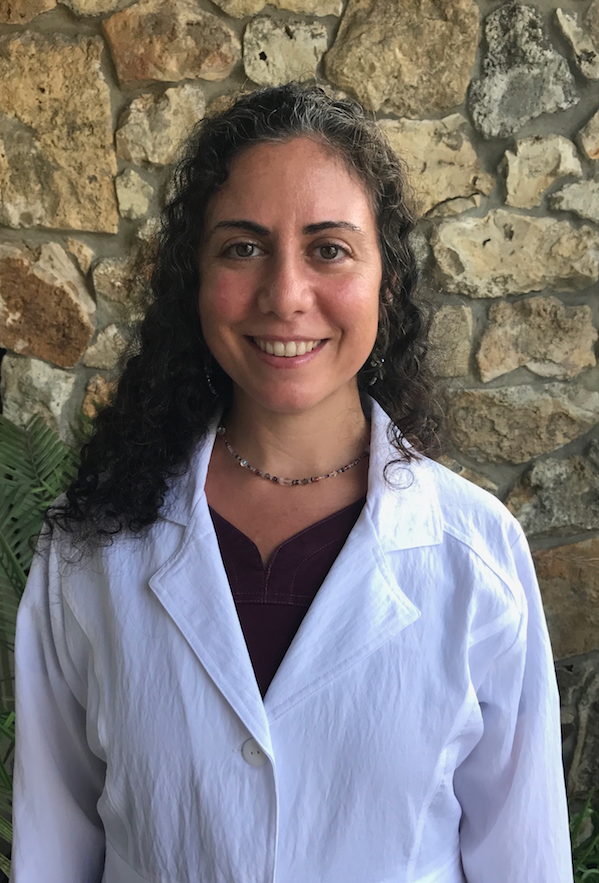By Elizabeth Jammal, AP, LMT
Elizabeth Jammal, AP, LMT, graduated from New College of Florida with a bachelor’s degree in visual arts and biology in 2005. She received her massage therapy license a year later at the Central Florida School of Massage Therapy. In 2011, she graduated from Dragon Rises College of Oriental Medicine and got her license as an acupuncture physician. She is also a certified yoga instructor with over 10 years teaching experience. She currently practices at the Floating Lotus Therapeutic Spa and Health Center in Gainesville, Florida. Modalities include but are not limited to acupuncture, herbal medicine, deep connective tissue/Swedish/sports massage, reflexology, aromatherapy, and nutritional and exercise lifestyle consultations. Practicing this art and science has become a passion in her life.
I’m scared of needles. Will getting acupuncture hurt?
A typical acupuncture experience is generally positive and pain free. I like to encourage patients to focus less on the mechanism of the therapy and more on the benefits. A very common response from people who do not like needles is “did you already put a needle in?” or “I didn’t even feel it.” There are, however, desirable sensations that positively indicate that the needle is doing its job. These include a slight tingling around the point and feelings of heaviness or a dull ache around the needle, which may travel a path in the body, or a fleeting, prickling sensation at the point as the needle passes through the superficial nerves of the skin. All of these normal sensations fade quickly and are replaced with a general overall feeling of well-being and euphoria.
How does acupuncture work and why would I need it?
Acupuncture works in several different ways. Each needle is placed in strategic positions according to the specific imbalances of each individual. At the root of these imbalances is stagnation of substances caused by a variety of things. One is blood stagnation, which is generally perceived as sharp pains in the body. In this case, the needle unblocks the blood stagnation by encouraging the body’s natural flow of circulation, warmth and blood to the area. Dull, achy sensations are calmed when an inserted needle unblocks more subtle substances such as emotions in an area and engages the body’s own cascade of natural chemicals to both soothe and draw awareness to the area. The therapeutic process ultimately encourages the body to reinstate its own natural free flow of health and vitality.
Do you sanitize needles or do I get my own set?
Every client receives his or her own set of needles. This is Florida law. All used needles are safely disposed of in a biohazard bin.
I’ve seen pictures of people getting acupuncture done on their face. How do you determine where to put the needles?
Needle placement is done on a case-by-case basis. A patient would only receive acupuncture in the face as part of a treatment plan for the particular imbalance, though it is not the standard. Some conditions that may be treated in this manner include stress and anxiety, sinusitis, headaches and tooth pain.
Could acupuncture cause scaring?
Acupuncture does not cause scarring. The gauges used are hair-like thin and the tiny space quickly closes back after the needle is removed.
Why did my acupuncturist ask so many questions at the consultation? And why did she check my tongue condition?
These questions are asked to give the practitioner clues to the most crucial aspect of the intake: a diagnosis. From the diagnosis, a treatment plan can be developed and the treatment can then be given. Just like an electrician would not go about rewiring an appliance before knowing what is going on, the same applies to an acupuncture treatment. The diagnosis is key in moving forward to an appropriate treatment plan.
Checking the tongue plays a key role in the diagnosis process. Like the hands and the feet in reflexology, the tongue is considered a microcosm of the whole body. The map of the tongue is a visual depiction of the various organ systems. The characteristics seen in each area, when skillfully analyzed, provide information as to any imbalances that may be occurring. For example, a purple or dusky color would indicate blood stagnation in a specific region or it could be generalized if seen over the entire tongue coating. The acupuncturist would then include moving stagnant blood as part of the customized treatment plan to help reinstate the smooth flow of substances in the patient.
Why do some acupuncturists use acupuncture needles with electric current? Does that form of acupuncture hurt at all?
We are all energy. Electro stimulation (e-stim) is akin to jumper cables for the car. When a trained practitioner applies the e-stim to the body, much like a trained mechanic would, the current flows from an area of high concentration down the gradient to an area of low concentration. This jump starts our vehicle so that it may drive on its own accord once again. When done properly, this valuable form of treatment should not hurt but can provide the desired pleasant sensation of a smooth stream as the controlled electricity from the cables communicate with each other through the needles.
What can I expect after treatment? Will I bleed after the needles come out?
You can expect a sensation of calming relaxation or youthful invigoration. It all depends on what has been addressed or brought into balance in the body. Bleeding, which does not occur frequently, would occur if the body needed it, such as in the case of excess pathological heat or blood stagnation.

